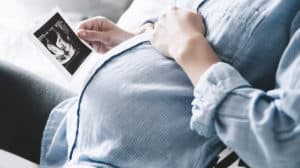Menopause is often diagnosed when a middle-aged woman displays classic symptoms of the condition and cessation of menses. If there is any question about the diagnosis, a blood test can be taken to measure the level of follicle stimulating hormone, or FSH. During menopause, this hormone is elevated because the brain attempts to stimulate the ovaries, but they do not respond. Measurement of FSH levels should not be used to determine the appropriate dose of estrogen to use in treatment, however.
Physical Changes
In addition to the symptoms, other changes occurring in menopausal women can be dangerous.
In menopause, the risk of heart attack and stroke increase. This occurs, it is thought, because estrogen, which helps to decrease plaque formation in the walls of arteries preventing atherosclerosis, is now being produced in much lower levels.
Estrogen also acts to increase HDL, or “good” cholesterol, while lowering total cholesterol. Lowered estrogen levels in menopause may increase LDL, or “bad” cholesterol, and lower HDL, thus increasing the risk of heart attack and stroke. Remember that heart attack is still the overall leading cause of death among women.
Calcium loss from bone is a normal part of the aging process. From the age of 28 on, women begin to lose bone mass. This loss is greatest in the first few years of menopause, when 1 percent to 2 percent of bone mass may be lost each year. Estrogen acts to help keep calcium in bone so it remains strong. Even with weight-bearing exercises and adequate calcium/vitamin D intake, a woman’s bones may become less dense if estrogen is not present. This occurs because decreased estrogen results in metabolic changes that allow an increase in bone breakdown and a decrease in bone formation.
Seventy-five percent or more of the bone loss that occurs in women during the first 15 years after menopause is attributable to estrogen deficiency rather than aging itself. Bone loss in this phase of life is so significant that many fractures in postmenopausal women do not occur as a result of trauma but are termed “fragility fractures.” A combination of estrogen therapy and calcium use can result in the stability of bone density and a decrease in hip fractures and compression fractures of the spine during menopause.
Insufficient estrogen levels have also been associated with altered memory, macular degeneration in the eye (which may cause blindness), and colon cancer. Lower estrogen levels can also result in the skin becoming drier and thinner. Testosterone production from the ovaries and adrenal glands continues in menopause. However, since it is no longer countered by estrogen production, it may contribute to thinning or loss of hair from the head, while stimulating in some women the growth of fine hair on the face, chin, and neck.




















